This post may contain affiliate links. Please read our disclosure policy. As an Amazon Associate, I earn from qualifying purchases.
Roast Beef with Yorkshire Pudding is the star at our Christmas dinner table! Crusty, slices of buttery roast beef, dripping with rich juices combine with a light and airy Yorkshire pudding.
This is a low and slow method of cooking a bone-in roast beef. It yields a tender, juicy, perfectly cooked roast beast but it takes some extra time. If you have an especially large roast then you will want to start cooking early in the morning.
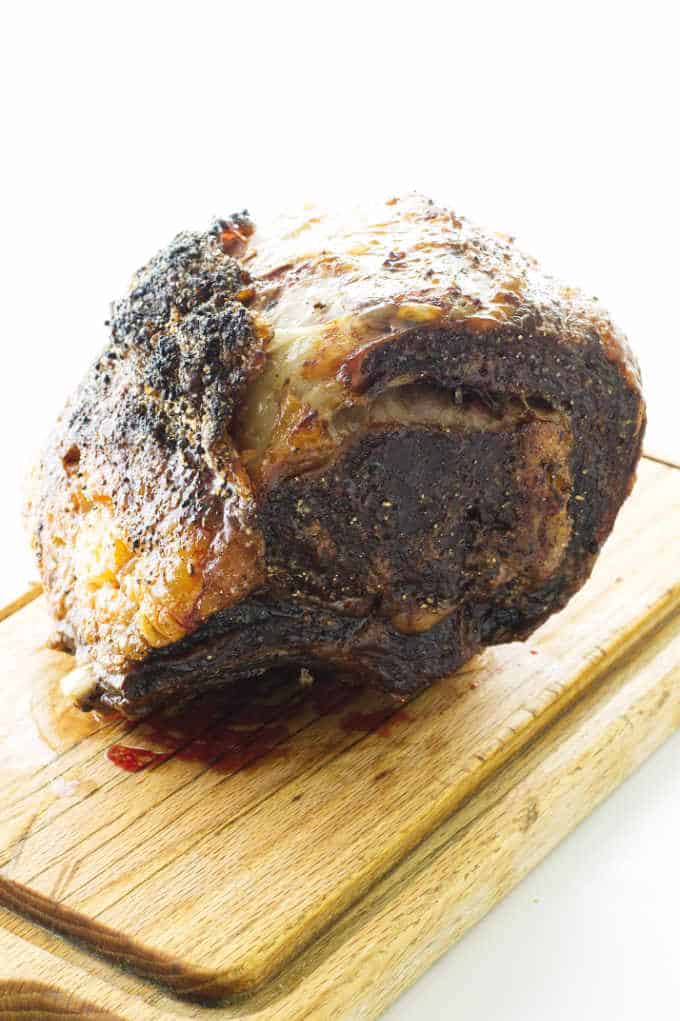
This impressive entree is a British classic feast and also known as the Sunday Roast. It is traditional to start the roast cooking before church so it is ready for the family when we get home from church.
The Brits love their Sunday roast beef with roasted potatoes, carrots and often parsnips. But the Yorkshire pudding is a must! And served with a rich, flavorful gravy!
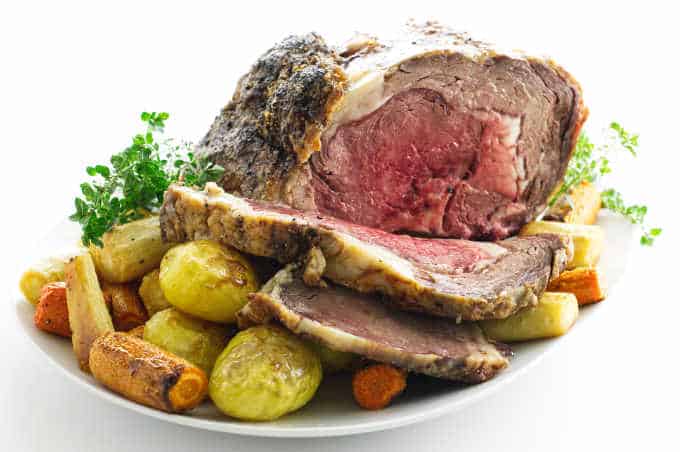
What is Yorkshire Pudding?
Well…it isn’t the sweet dessert pudding that Americans associate with pudding. A Yorkshire pudding is a simple mixture of flour, eggs, salt and milk. The batter bakes in a bit of the savory roast beef drippings at a hot temperature. As it bakes it magically transforms into a spectacular affair. The batter puffs up over the edges of the dish and becomes crisp, golden and sort of lumpy or hollow in the center.
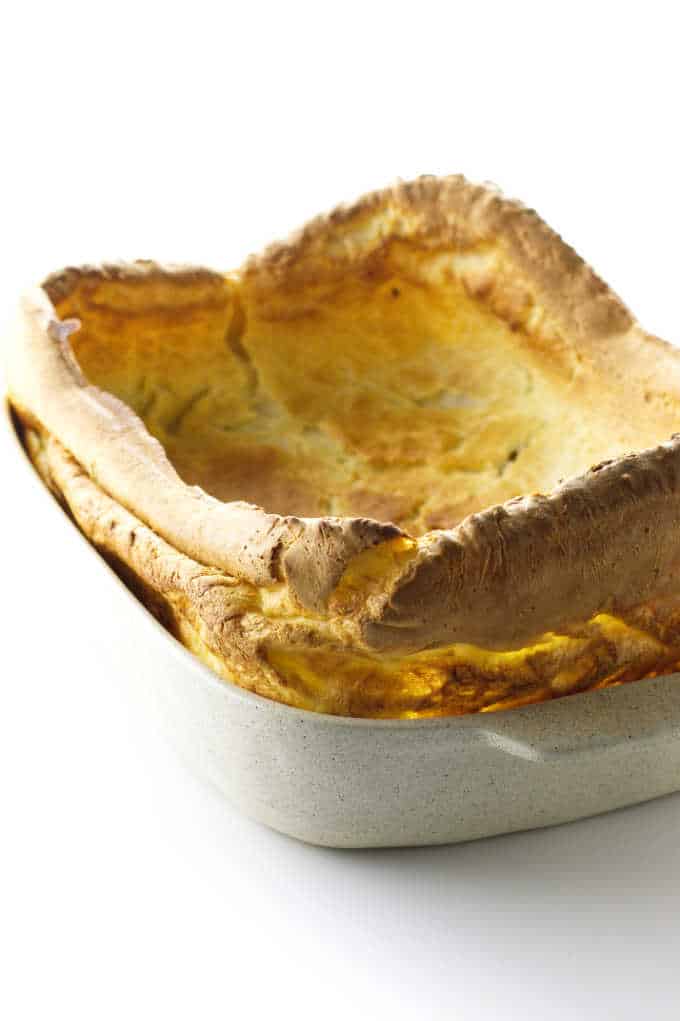
If you have ever ate popovers you have had a taste of Yorkshire pudding. The batter ingredients are the same but the Yorkshire pudding is baked in hot roast beef drippings.
A Yorkshire pudding is traditionally baked in a square or rectangular dish. However, it is common to see individual servings made in popover pans.
How to Prepare a Roast Beef with Yorkshire Pudding Dinner:
A standing rib roast beef is an extravagant purchase but most roast beef cuts are suitable for this classic British feast. We are using a ‘Choice’ rib roast for our recipe of roast beef with Yorkshire Pudding.
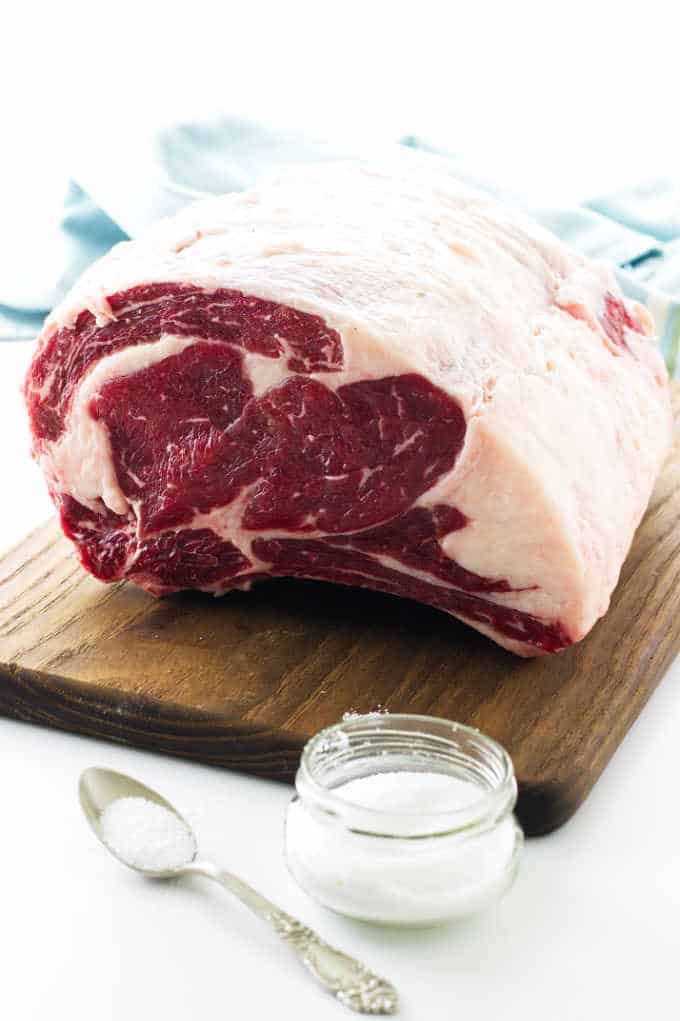
Suggestions for other cuts of beef suitable for this classic dinner are:
- Chuck roast: This is a budget-friendly beef roast cut from the shoulder with marbling throughout which adds mega flavor. It is also known as a pot-roast.
- Tri-tip roast: There is nice marbling in this triangular-shaped roast. It is a small cut as it is taken from the top of the sirloin. The size of the roast makes it perfect for small intimate dinners. Here is how to cook a tri-tip in the oven.
- Rump roast: Cut from the outside of the back leg, it has nice marbling and great flavor. Plus it is very easy on the budget.
- Top loin roast: A lean roast cut from the same muscle as the rib roast. This is not considered a ‘budget’ cut and almost as costly as a standing rib roast.
- Eye of the round: This is an economical cut of beef taken from the rear leg of the animal and it is lean and tough. It is a very flavorful cut and best roasted low and slow. Braising with wine, garlic and herbs is one of my favorite methods of cooking this roast.
Beef is not the only roast for this special dinner with Yorkshire Pudding. Try this recipe with a lovely whole leg of lamb, or a slow-roasted pork shoulder with rich gravy poured over squares of Yorkshire pudding.
How to prepare and roast the beef:
A rib roast makes an impressive, show-stopper on a Christmas dinner table. Buy the best quality cut of beef that you can afford. A prime cut rib roast is extra pricy and usually reserved for restaurants. A choice cut rib roast is also known as a standing rib roast. It is less expensive than the prime and, truth be told, it is every bit as delicious!
As the holiday season approaches, watch your weekly meat market flyers for special sales and grab your share. Normally, this roast would cost $15 per pound, the weekly special of $9.98 was a deal-maker!
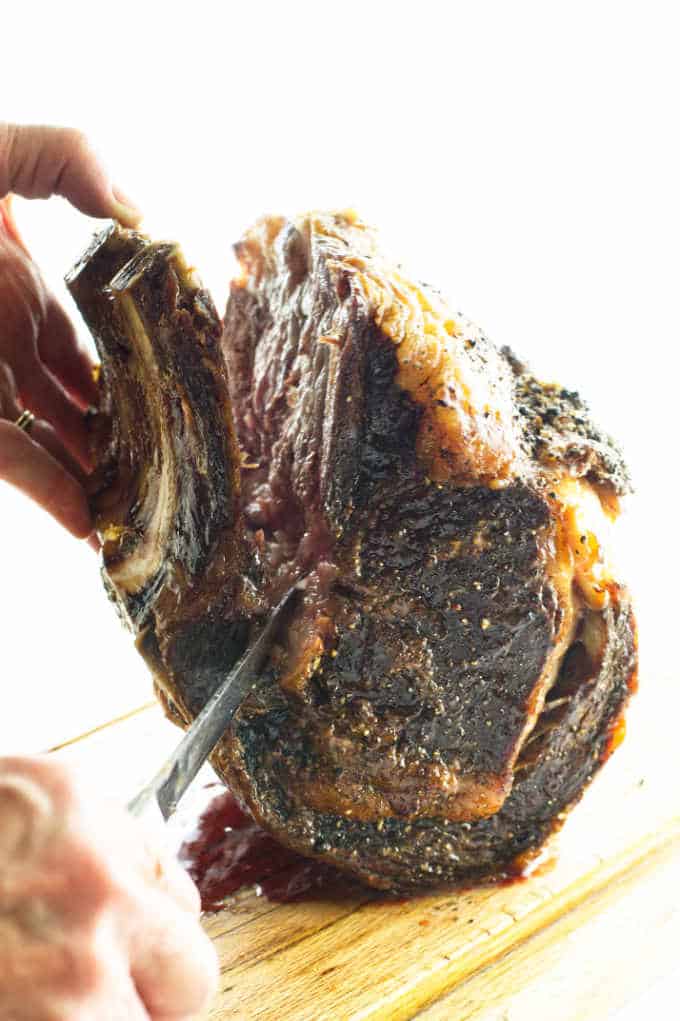
Step 1: Dry-Brine the Beef.
The dry brine ages and tenderizes the roast, drying out the exterior which provides for better browning during the searing process. Rub 2 tablespoons kosher salt over the entire roast. Transfer to a large plate, and refrigerate, uncovered, for at least 24 hours or up to 4 days. This is how we prepared our smoked prime rib for the grill as well.
Step 2: Tie the beef.
Remove the roast from the refrigerator and let it sit on the counter for 2 hours to raise the temperature of the beef. Tie the roast with kitchen twine parallel to the rib bones at least at each end or tie between each pair of ribs. This is an optional step but the compact bundle helps cook the roast more evenly.
Step 3: Preheat the oven.
Adjust oven rack to middle position and heat the oven to 200°F. Set a V-rack or a wire rack over a rimmed baking sheet and set aside.
Step 4: Sear the beef.
Heat some oil in a large cast-iron or heavy-bottomed skillet until just starts to smoke. Sear the sides and top of the roast until browned, 6 to 8 minutes total. Transfer to a plate and let the meat cool for 10 minutes.
Step 5: Roast the beef.
Place the roast, fat side up, on the V- rack or wire rack, season with pepper but salt is not necessary (remember, you already salted it for the dry brine). Insert the thermometer probe in the center of the roast without touching any bone. Roast until desired doneness. I roasted the beef until the meat registered 120°.
Step 6: Rest the roasted beef.
Remove the roast from the oven but leave it on the baking sheet, do not remove the thermometer-probe, tent loosely with aluminum foil, and let rest for another 20-30 minutes. The heat carry-over will bring the meat to 130° for medium-rare and will be tender and juicy.
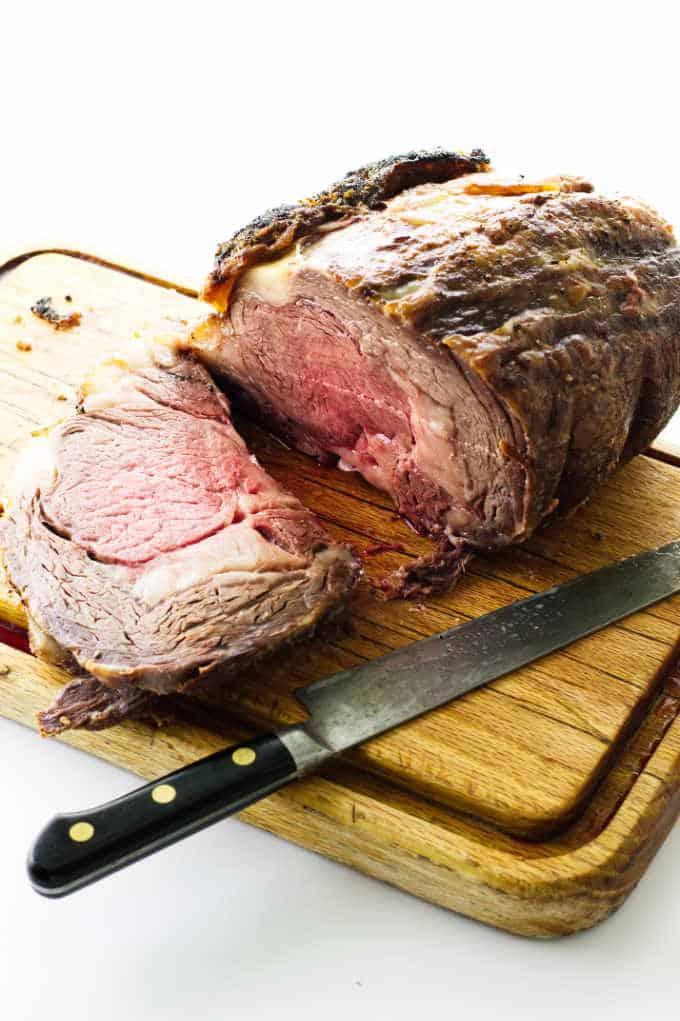
Internal temperatures of roast beef:
Do not rely on a time-to-pound roasting method. Invest in a good quality meat thermometer probe for accurate temperature control.
- 115 to 120°F for medium-rare —125 to 130°F after resting.
- 125 to 130°F for medium —135 to 140°F after resting.
- The roast will continue to rise by 5 to 10°F as it rests
Your roast should “rest” after cooking and before cutting. During this rest period the juices reabsorb back into the fibers of the meat resulting in more flavor and juicier roast beef.
Approximate times to cook a bone-in roast beef at 200°F
This is a time table for the approximate amount of time it will take to cook a bone-in roast beef at 200°F. This recipe is for a low and slow method of cooking. Keep in mind that the time is an approximation and the actual doneness should be determined with a thermometer.
| Size | approx. time (for rare) |
|---|---|
| 4 lb. | 2 hr 30 |
| 5 lb. | 3 hr 10 min |
| 6 lb. | 3 hr 50 min |
| 7 lb. | 4 hr 30 min |
| 8 lb | 5 hr 10 min |
| 9 lb. | 6 hr 30 min |
Bake the Yorkshire Pudding:
During the time the beef is roasting in the oven, mix the Yorkshire Pudding batter, cover, set on the kitchen counter and reserve. While the roast is resting, increase the oven temperature to 450° and heat the oven-proof dish/pan with roast beef drippings.
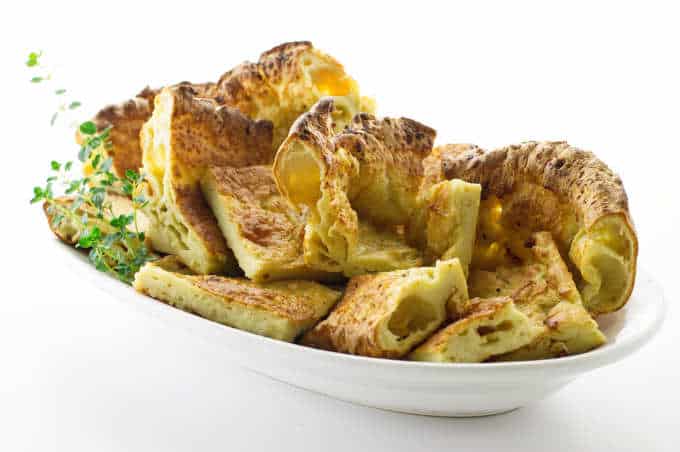
If there aren’t enough drippings add additional bacon drippings or cooking oil, preferably an oil with a high smoke point, and heat for 10 minutes until the oil is almost smoking.
Pour the pudding batter into the hot dish/pan and bake for 15 minutes, then reduce the heat to 400° and bake for an additional 15 minutes until puffed and golden brown.

Cut the Yorkshire pudding into serving sizes and serve with gravy and slices of roast beef.
Menu suggestion:
Enjoy this classic Roast Beef with Yorkshire Pudding feast with a side of freshly Steamed Green Beans and an easy, crisp Cranberry- Pecan Salad. Top of this scrumptious Christmas dinner with a make-ahead dessert of Old-Fashioned Cream Cheese Pound Cake with fresh strawberries on the side or a simple eggnog tart. Merry Christmas to all….❤️
We have recipes for leftover beef if you can’t eat everything.
More Recipes You Will Love:
- Beef Wellington: Inside this package of golden puff pastry is a juicy, tenderloin roast beef covered in a mushroom-herb mixture and baked to a medium-rare. This is another feast from the British Isles.
- Butterflied Herb-Roasted Leg of Lamb: Perfect for a special event! The rich, succulent flavor of lamb is enhanced with a herb rub of rosemary, mint and garlic then roasted in a hot oven.
- Slow roasted pork shoulder: This budget-friendly cut of meat is easy to prepare. The long, slow roasting process makes it exceptionally tender.
Pin this now to find it later!
Pin It
Roast Beef with Yorkshire Pudding
If you make this recipe, please leave a star rating and comment.
Ingredients
- 9 pound prime beef rib roast, with (4 bones), or choice cut of
- Kosher salt
- 2-3 teaspoons vegetable oil
- ground black pepper
- Yorkshire Pudding
Instructions
- Rub 2 tablespoons kosher salt over entire roast. Transfer to a large plate, and refrigerate, uncovered, for at least 24 hours or up to 4 days.
- Take the roast out of the refrigerator and let it sit on the counter for an hour to raise the roast temperature.
- Adjust oven rack to middle position and heat the oven to 200°F. Set a V-rack or wire rack in a rimmed baking sheet.
- Heat oil in a 12-inch skillet or a large griddle until just smoking. Sear sides and top of the roast until browned, 6 to 8 minutes total. Let meat cool for 10 minutes. Transfer roast, fat side up, to the prepared rimmed baking sheet and season with pepper and any other desired seasonings. There is no need for further salt. Insert a thermometer-probe into the center of the roast without touching any bone. I roasted it until the meat registered 120° (or your desired temperature).
- While the roast is in the oven make the batter for the Yorkshire pudding. Cover it and let it rest until the roast is finished.
- Remove roast from the oven but leave it on the baking sheet, do not remove the thermometer-probe, tent loosely with aluminum foil, and let rest for another 20-30 minutes. The heat carry-over will continue to bring the roast up by about 5°F.
- While the beef is resting increase the oven temperature to 450°F and bake the Yorkshire Pudding (follow the instructions in the recipe for the Yorkshire pudding).
- Before it is time to serve the guests, crank the oven up to 500°F and place the roast in the hot oven for 6 to 8 minutes to get a crisp brown crust on the exterior.
Notes
- Optional: To help cook the roast evenly, tie the roast with kitchen twine parallel to the rib bones at least at each end or tie between each pair of ribs.
- For easier carving have your butcher remove the bone section and then tie it back on with twine.
- I use avocado oil or coconut oil when cooking with high heat because they have high smoke points.
- For best results use a meat thermometer probe, do not trust the time-per -pound method.
Temperature for doneness:
- 125°F for rare
- 130°F for medium-rare
- 133°F for medium
- 140°F for Medium-well
- Remove the roast about 5°F before it reaches your desired temperature. The roast will continue to rise by about 5°F as it rests
Nutrition
Nutrition information is automatically calculated, so should only be used as an approximation.
 Like this recipe? Rate & comment below!
Like this recipe? Rate & comment below!

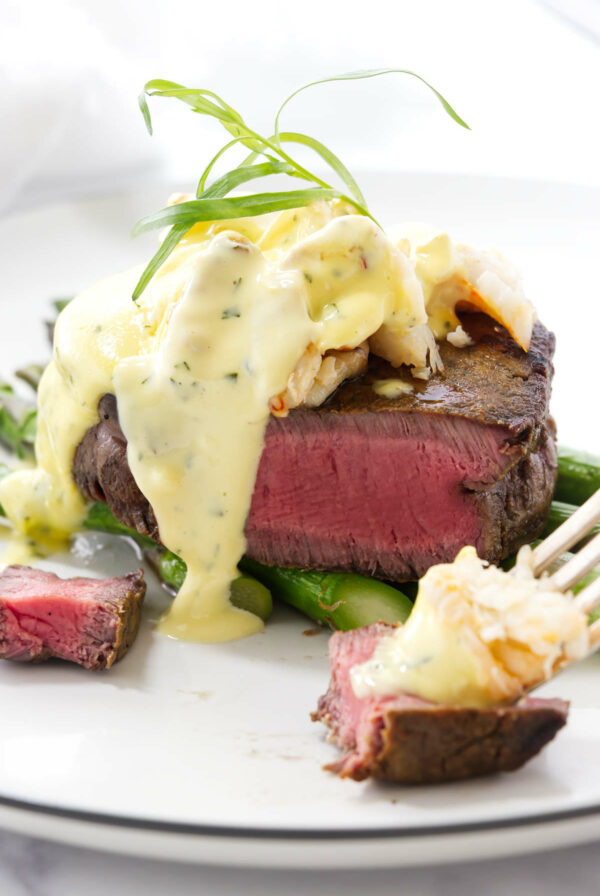












What a fantastic holiday meal! I had a huge rump steak for the lunch today and going to make another one for tomorrow 🙂 Your roast beef looks truly droolworthy.
Thank you, Angie! I love rump roast and I think it is time for me to cook one up. Thanks for reminding me!